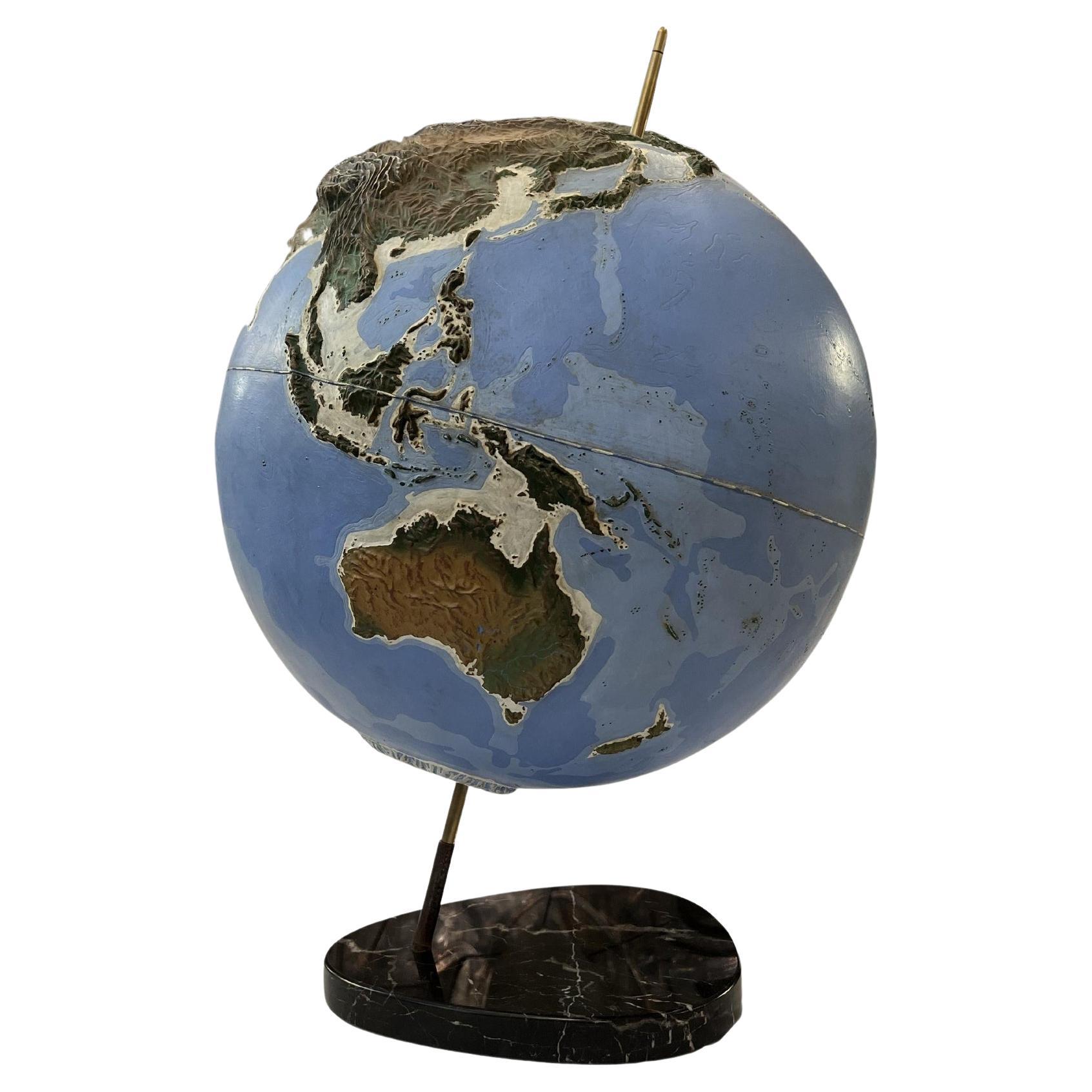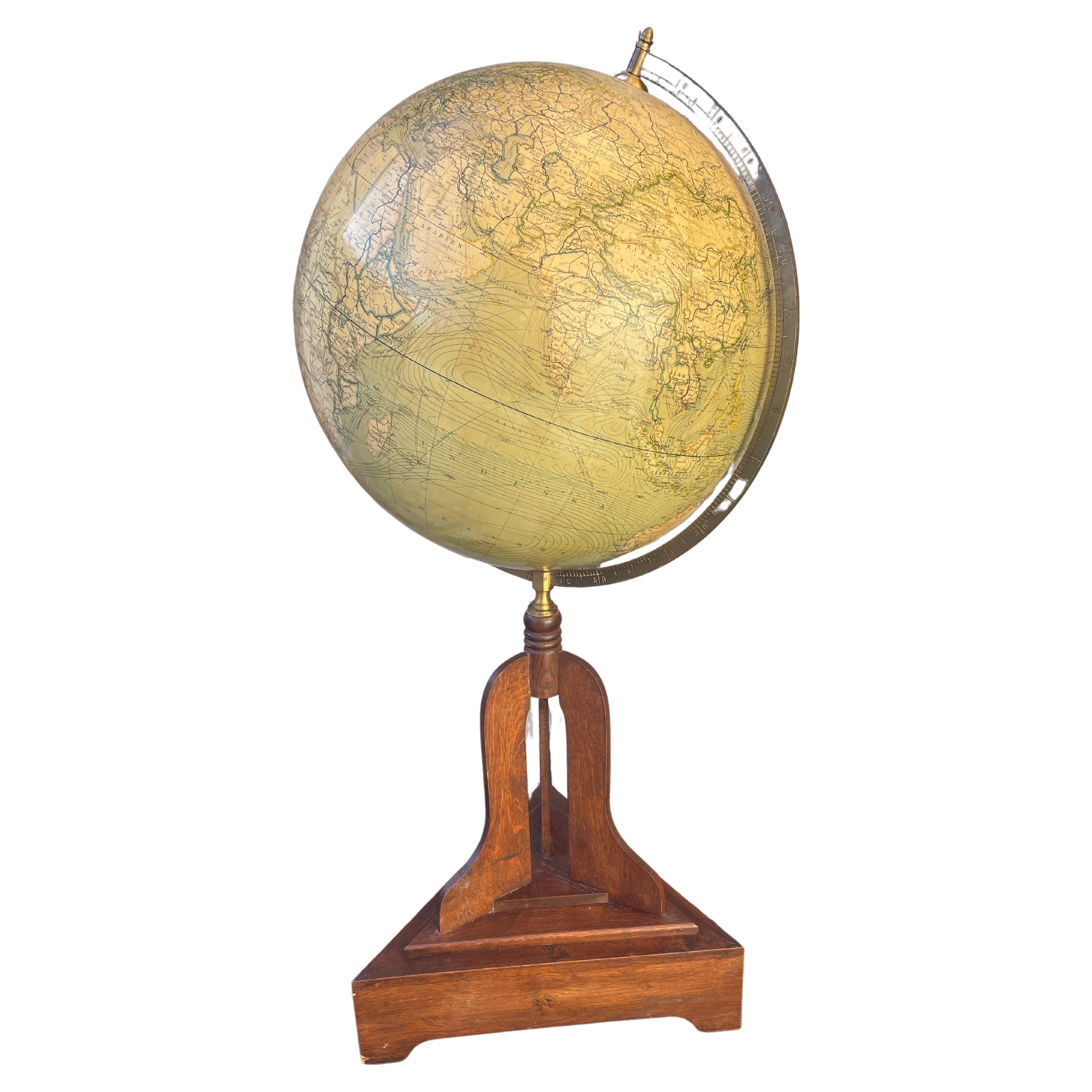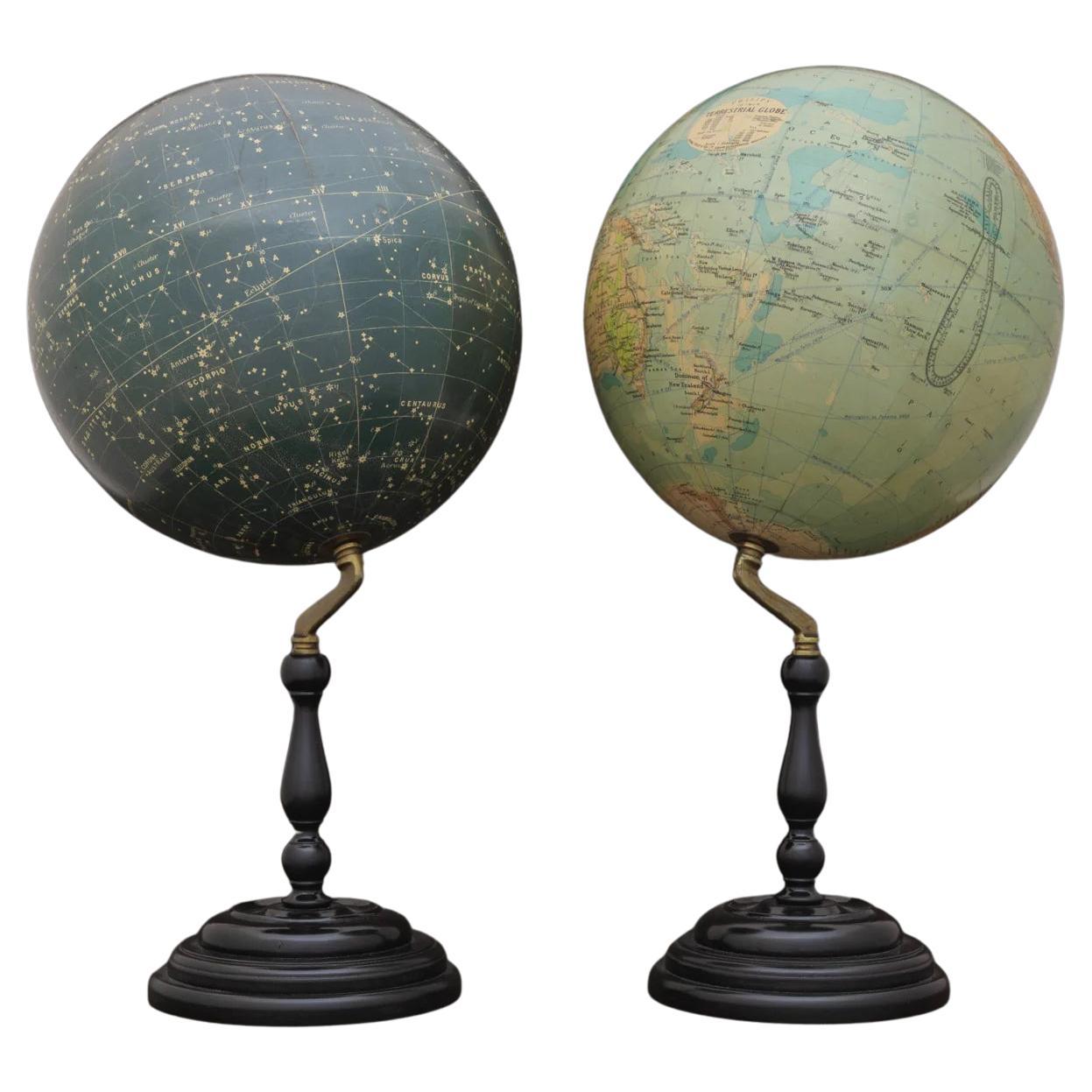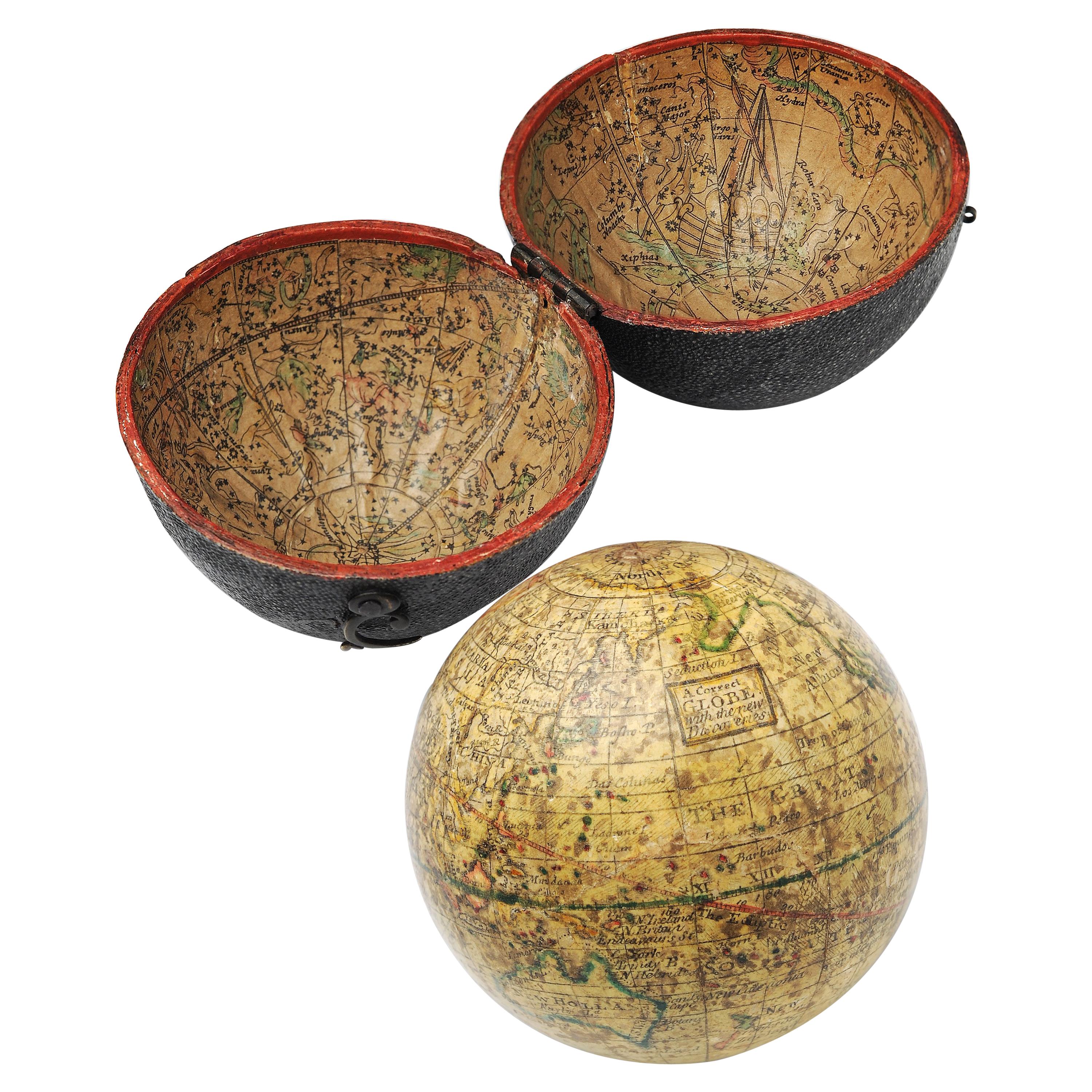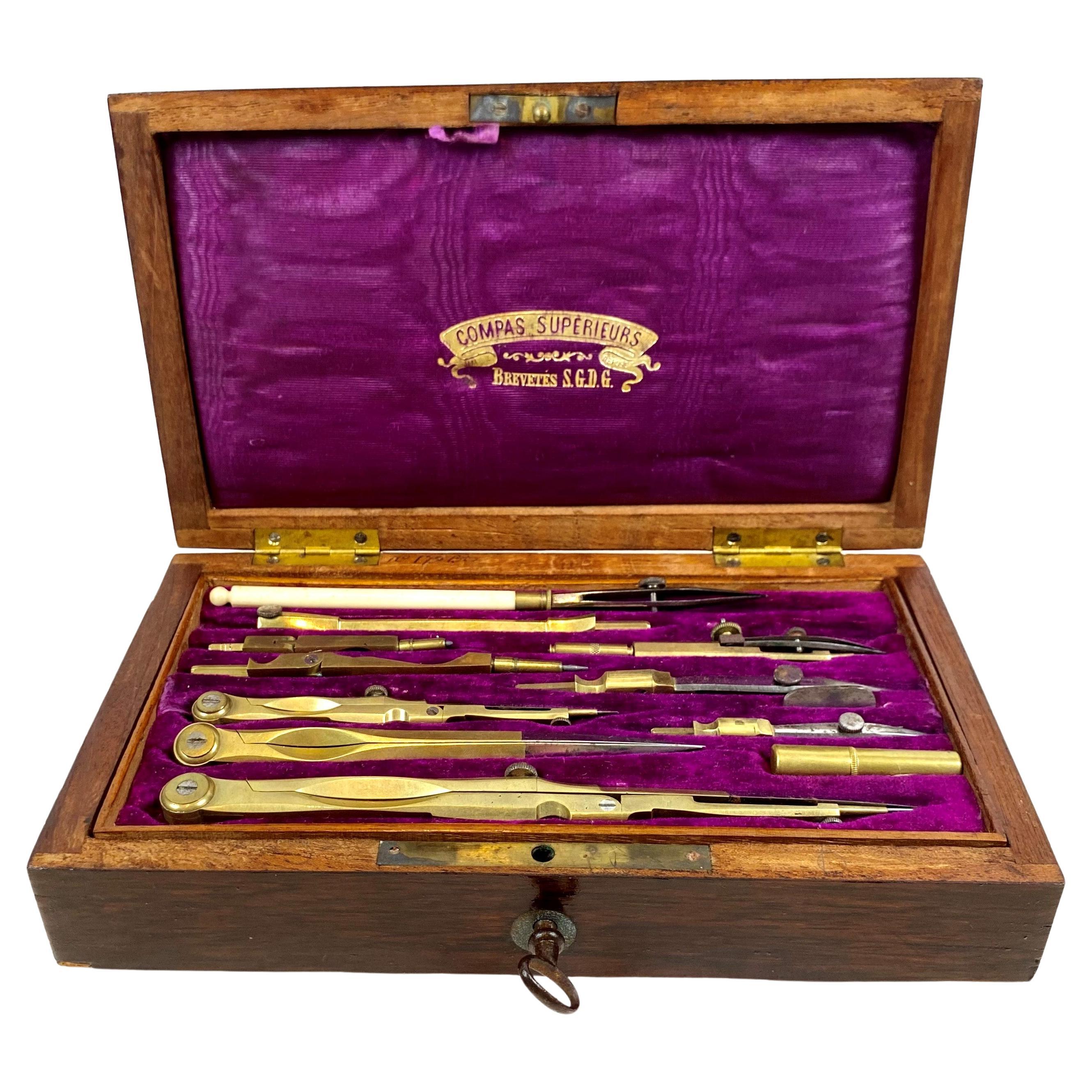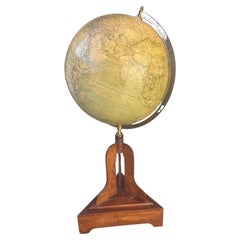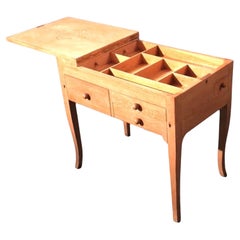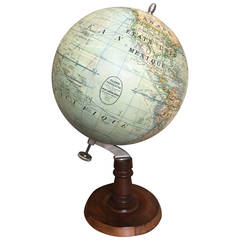
Big French Globe, circa 1920
View Similar Items
1 of 9
Big French Globe, circa 1920
You May Also Like
- Large Painted Plexiglas Terrestrial Globe, France circa 1950Located in Paris, FRImportant relief earth globe representing the oceans and the continents. The globe is made of painted plexiglas, fixed to the marble base by a brass axis. France around 1950.Category
Vintage 1950s French Scientific Instruments
MaterialsMarble, Brass
- Large 1920's Globe on Wood BaseLocated in Haddonfield, NJLarge Vintage Globe on Wood Base, circa 1920's Decorate an office or a desk with this beautifully preserved antique globe. Crafted in Europe, circa 1920's this piece is mounted on a...Category
Vintage 1920s European Biedermeier Scientific Instruments
MaterialsBrass
- Big Jeweler Style Art Deco in Wood, 1920, Made in FranceLocated in Ciudad Autónoma Buenos Aires, CFrench Desk style: Art Deco Year: 1920 It is an elegant and sophisticated dream desk. The quality of the furniture and the exotic wood used make it unique. It is an icon of distinct...Category
Vintage 1920s French Art Deco Desks and Writing Tables
MaterialsWood
- Vintage French Toy "Les Acrobates", circa 1920By G. DoloyLocated in Incline Village, NVRare 100 year old French toy in it's original box depicting two acrobats attached to a wire frame with brown barrel weights, cascading down a green metal ladder. Once assembled (loop...Category
Vintage 1920s French Folk Art Toys
MaterialsTin
- Lacrosse Stick, Circa 1920'sLocated in High Point, NCCirca 1920's lacrosse stick made form hickory. The net is woven from leather and twine. This is a beautifully formed bentwood stick that would look great in any room of the house!Category
Vintage 1920s English Sports Equipment and Memorabilia
MaterialsLeather, Hickory
- Pair of Philip & Son Globes, circa 1946By George Philip & SonLocated in London, GBA wonderful set of Terrestrial and Celestial 12 inch globes by George Philip and Son. Presented on brass inclined plain mounts attached to original turned ebonized wooden bases and uprights with axes secured at the top by brass acorn finials. Unusually, the terrestrial globe has a copyright date shown under the cartouche, 1946. The celestial globe is printed in beige against a dark blue background and shows the constellations and many named stars. Solid lines connect the stars within constellations rather than illustrating them as mythological and other figures.? A cartouche is present that includes the title and maker's address. When looking at the stars from Earth the viewpoint is effectively inside a celestial sphere. The surface of a celestial globe shows the star field as a projection viewed from the outside and is therefore reversed, with the constellations appearing as their mirror images. The terrestrial globe is printed in several colours and comprises of twelve coated lithographic paper gores with polar calottes over a twelve inch card sphere. The age of the globe has been confirmed by the political borders and named cities displayed. The globe is nicely detailed and has a grid network of parallels and meridians. It shows all the continents and countries as they were at the time it was printed and also indicates all the principal steamship routes with distances in nautical miles. The globe also has a printed Analemma - a diagram showing the declination of the Sun for every day in the year and the equation of time. The Analemma therefore shows the position of the Sun in the sky as seen from a fixed location on Earth at the same mean solar time, as the sun's position varies over the course of a year. A cartouche is present that includes the title and maker's address. Dimensions of each globe: 30.5 cm/12 inches (diameter) x 59 cm/23 1/4 inches (max height). George Philip, (1800–1882) was a cartographer and map publisher. He founded George Philip & Sons in 1834 in Liverpool primarily as a bookseller and stationer, but rapidly expanding to become a publisher of primarily maps, atlases and educational works. He had one son, also George (1823–1902), who was admitted to the business in 1848. George senior was born in Huntly, Aberdeenshire and by 1819 he had become assistant to the Liverpool bookseller, William Grapel before going on to start his own business. He used cartographers (such as John Bartholomew the elder, August Petermann, and William Hughes) to produce maps on copper plates. Philip then had these printed and hand-coloured by his women tinters. The business expanded rapidly and by the time he produced his county maps of 1862 he was using machine...Category
Vintage 1940s British Globes
MaterialsBrass
$8,686 / set
